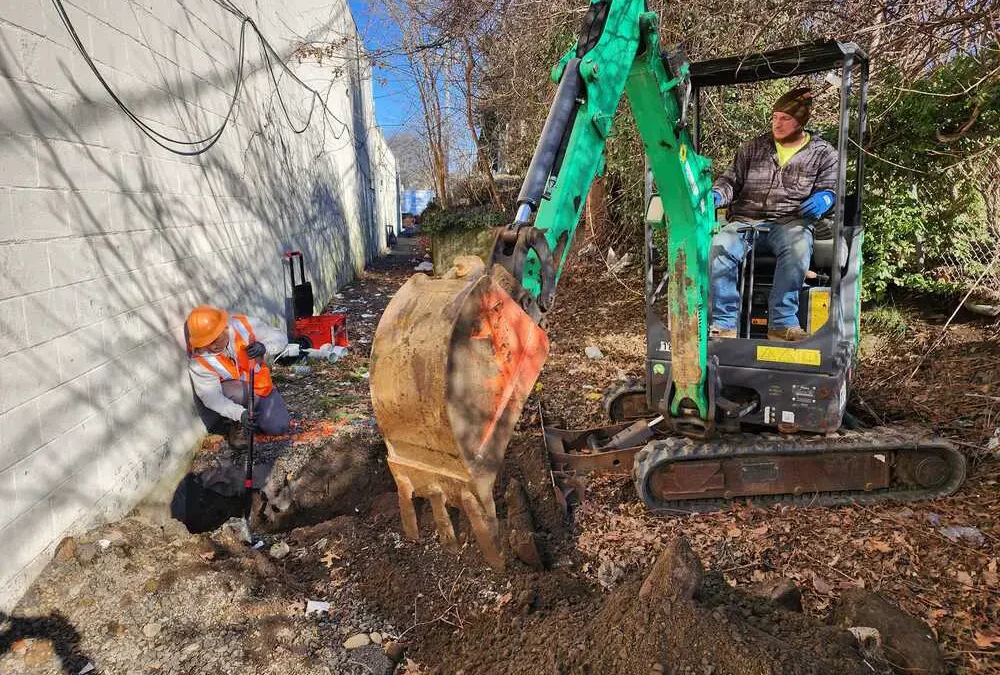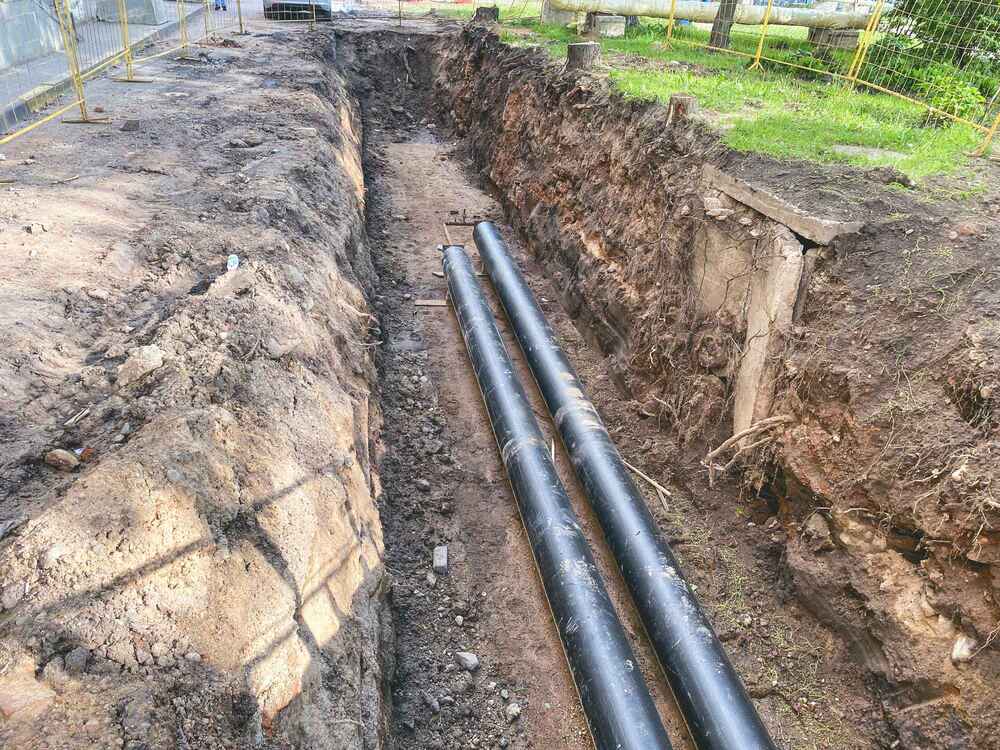Beneath the calm facade of our homes, a crucial drama unfolds silently; the intricate movement of water through our plumbing. While we often think of plumbing as dealing with a leaky faucet or unclogging a drain, there’s an unseen player in the game: plumbing excavations. Think of it as the surgery for your home’s water systems, a down-to-earth process involving digging to keep everything flowing smoothly.
This journey isn’t just about fixing what’s broken; it’s about exposing the mysteries beneath our feet. Plumbing excavations are the architects behind the scenes, creating narrow pathways called plumbing trenches. So, let’s take a down-to-earth dive into the world below, where trenches become the arteries, and excavation is the pulse, unraveling what plumbing excavations really entail and the moments they quietly step in to rescue our water systems.
Understanding Plumbing Excavations: Going Beneath the Surface
Plumbing excavations involve digging into the ground to access or repair underground plumbing systems. These operations go beyond the usual fixes inside our homes, reaching the very foundation of our water infrastructure. Let’s break down the key components:
Plumbing Trenches: Unveiling the Depths
One of the primary aspects of plumbing excavations is the creation of plumbing trenches. These are narrow channels dug into the ground to house pipes, conduits, or other plumbing components. Trenching is a meticulous process, ensuring the proper placement and support for the plumbing elements.
When our homes require a new water line or a replacement, trenching a water line becomes a necessity. It’s like creating a carefully crafted pathway beneath our feet, guiding water from one point to another.
The Need for Water Line Excavation: Recognizing Signs
Water line excavation becomes imperative when there are signs of trouble lurking beneath the surface. Leaks, water pressure issues, or a sudden spike in your water bill might be red flags. Ignoring these signals could result in more significant problems, making excavation a preventive and corrective measure.
When Plumbing and Excavation Converge: Why and When
Now that you understand the basics, let’s look at the scenarios where plumbing and excavation join forces.
Ancient Pipes and Modern Needs: Upgrading the System
Homes with outdated plumbing systems might face challenges like rusty pipes, frequent leaks, or reduced water quality. In such cases, hiring a plumbing excavation company becomes a need of the hour. Out with the old, in with the new; excavating to replace aging pipes ensures a reliable and efficient water supply for modern needs.
Detecting the Invisible: Dealing with Underground Leaks
Underground leaks can be elusive, causing damage over time before surfacing. When you notice unexplained wet spots in your yard or a drop in water pressure, it’s time to consider plumbing and excavation. Locating and repairing these underground leaks may require digging, but it prevents further damage and preserves the integrity of your water system.
Expanding Horizons: Adding New Lines and Fixtures
Home improvements often involve expanding or adding new plumbing lines. Whether it’s a new bathroom, kitchen, or an outdoor fixture like a sprinkler system, plumbing excavations become the groundwork for these enhancements. It’s like giving your home a circulatory system upgrade, ensuring every corner receives the water it needs.
Read More About: Trenchless Sewer Repair Methods
Ensuring a Seamless Operation: The Process of Plumbing Excavations
Understanding the process behind plumbing excavations can demystify this seemingly complex task. Let’s unravel the steps followed by our plumbing excavation contractors in Danbury, CT to ensure seamless operations:
Assessment and Planning: The Blueprint Underground
Before the shovels hit the ground, a thorough assessment is conducted. This includes identifying the problem, determining the scope of excavation, and creating a detailed plan. It’s the blueprint for what lies beneath, guiding the excavation team through the process.
Marking and Safety Measures: Digging with Precision
Once the plan is in place, the excavation area is marked to ensure precision. Safety measures are implemented, including locating existing utility lines to prevent accidental damage. Excavating without hitting gas or electrical lines is as crucial as fixing the plumbing issue.
Repair or Replacement: Fixing What Lies Beneath
Exposed pipes or components are then assessed for damage. Repairs are made, or replacements are carried out, depending on the severity of the issue. This step is like surgery for your plumbing system, ensuring it operates at its best.
Backfilling and Restoration: Concealing the Evidence
Once the plumbing issue is resolved, the excavation area is backfilled. This involves returning the soil to its original position and compacting it to restore the ground’s integrity. The goal is to leave little evidence of the surgical operation that took place beneath the surface.
Conclusion: Going Deep for a Leak-Free Future
In the world of plumbing, excavations represent the necessary deep dive to ensure the longevity and efficiency of our water systems. From trenching a water line to repairing underground leaks, these processes are the unsung heroes of preserving the flow of clean water to our homes.
Understanding when plumbing excavations are needed and appreciating the meticulous process involved empowers homeowners to address issues proactively. So, the next time you see a patch of freshly filled soil in your yard, remember the intricate dance happening beneath the surface, the dance that keeps your water flowing smoothly.
For plumbing issues below the surface, trust Rapid Rooter. Specializing in plumbing excavations in Danbury, CT, we excel in trenching water lines, fixing underground leaks, and upgrading pipes. Rapid Rooter’s skilled team ensures an efficient process. Don’t delay; contact them today for reliable solutions. Your home’s plumbing deserves Rapid Rooter’s expertise. Schedule your service now to let them handle the depths beneath with precision and care.


